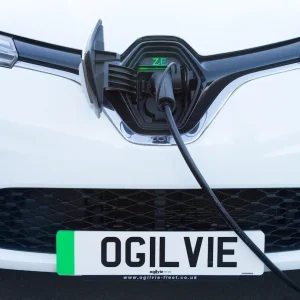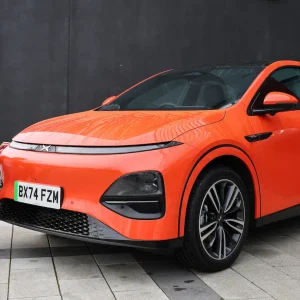Emissions reductions continue to progress at a spectacular pace. Paul Barker takes a look at what the top 20 fleet manufacturers can offer businesses looking for the most efficient options
BusinessCar’s fourth annual analysis of the green efforts of the top 20 biggest-selling brands comes at a time where eco is still important but, if anything, fleets have become more costs-concious and are cutting CO2 as a by-product of running more efficient vehicles.
However, there are still plenty of firms with an eco-focus, and with technology developments coming thick and fast, the landscape changes significantly every year. Which is why we’ve made a few tweaks to the criteria for this year’s analysis. We’ve added a local air pollution rating, as the environmental debate over emissions is beginning to stretch beyond CO2 towards particulates, NOx and other emissions. We’ve also added a category looking at a brand’s variance from its individual EU-set CO2 target. We’ve always judged manufacturers by their average emissions, which is still included, but the distance from EU target also takes into account the size of vehicles a manufacturer sells.
We’ve used data supplied by www.cleangreencars.co.uk for the average emissions, percentage change for that figure on 2009, the percentage they are away from their individual EU target emission figure and how the brand’s biggest fleet seller compares with its class average. It also supplied local air pollution figures, and in this instance we’ve ranked the top 20 in order for each of the four gases (particulates, NOx, hydrocarbons and carbon Monoxide) with the accumulated total from their positioning in the four table giving a score. Three other categories came from BusinessCar’s online tax calculator, www.businesscar.co.uk/taxcalculator, provided by Comcar: the total number of individually listed models each manufacturer has on its price list below 121g/km and below 100g/km (which is where the 10% band moves to in 2012), and the lowest-emission model it sells.
The final two categories – the current eco effort and future eco effort – are ones BusinessCar judged at its own discretion.
Audi 58%
A middling result for Audi, which has a good number of models available below 121g/km across A3 and A4 lines, and scored well for the A3’s emissions being well below class average, although the fact its range leaned towards larger models counted against it.
BMW 64%
BMW, first onto the low-CO2 bandwagon, needs another leap forward, and will certainly get it soon with a new 1-series, plus two electric models launched under a specific new branding. But having nothing presently below the 320d ED’s 109g/km cost it this time.
Citroen 72%
A podium position for Citroen, which enjoyed a big drop in average emissions last year and has also introduced its first pure electric model in the form of the Mitsubishi i-Miev-based C-zero. A lack of sub-100g/km models stopped Citroen challenging for the top two places.
Fiat 70%
Lowest Average CO2
Fiat, the firm with the lowest average emissions of all, is helped by its absence of larger models in the range, but a choice of 14 alternatives under 100g/km is impressive, and there is a constant trend of decent year-on-year cuts in average CO2.
Ford 56%
A mixed bag for Ford, the UK’s top-selling fleet brand, with great scores for the variety of vehicles under 121g/km and for what’s coming in the near future. Ford, however, is no better than average in any of the other categories.
Honda 52%
A focus on hybrids at the expense of low-CO2 diesels, and not matching Toyota‘s hybrid emissions figures, means this assessment was a struggle for Honda. Only on local air pollution, where hybrids significantly hold the upper hand over diesels, did Honda shine.
Hyundai 54%
A new entrant thanks to the brand breaking into the top 20 fleet sellers, Hyundai was the only car maker to increase its average CO2 in 2010, as it launched well-received larger models into new segments, although the 134g/km average is still low overall.
Kia 50%
A lack of sub-100g/km models will be rectified in some style by the Korean brand later this year, with the arrival of the 85g/km Rio supermini, although the lower medium Ceed’s average emission are well below the class average.
Mazda 36%
A couple of years from now Mazda’s result will be very different with radical new tech on the way, but at present it’s fair to say low CO2 isn’t one of the firm’s key strengths. A lack of choices under 121g/km and nothing below 100g/km shows how far it has to go.
Mercedes 28%
Last Place
A huge contrast to its premium German rivals that are safely ensconced in mid-table, Merc takes this year’s wooden spoon after Land Rover dropped out of the top 20. A reasonable local air pollution rating and decent cut in average CO2 were the only saving graces.
Mini 62%
Best For Local Air Pollution
BAs the Mini range grows in physical size as well as number of models, there will be pressure to keep cutting emissions as much of the brand’s historically low-CO2 position is thanks to the baby model range. A lack of big eco development on the horizon is also worrying.
Nissan 38%
While a fanfare has quite rightly greeted the new all-electric Leaf, the first car developed purely as an EV, the rest of the range isn’t so focused on low CO2. Good and popular though models like the Qashqai and Juke may be, they don’t offer much in terms of efficiency.
Peugeot 70%
Joint fourth, and that’s before Peugeot enters the hybrid marketplace with a sub-100g/km version of the 3008 crossover, the first diesel hybrid on sale. Just a shame CO2 didn’t fall as quickly as others last year, and that the 207 has relatively high average CO2.
Renault 52%
Renault will be an interesting one in future versions of this feature, being on the verge of a large-scale immersion into the world of electric vehicles. It needs something because it’s languishing here in mid-table while French rivals Citroen and Peugeot are much higher.
Seat 70%
Biggest CO2 Reduction
The most impressive fall in average CO2 of all 20 manufacturers gives Seat a good grounding to build from. A decent array of options under 100g/km is promising, although there is a small worry over where the next step will come from.
Skoda 66%
Still nestled neatly in the top half thanks to a impressive emissions falls across its model range, including getting the Octavia below 100g/km and the Superb down to 115g/km. But like sister brand Seat, there are questions about where the next step is coming from.
Toyota 86%
Winner
Toyota’s fourth win in a row comes after the addition of a couple of new categories failed to throw the Japanese brand off its stride. The only weakness was CO2 falling more slowly than most rivals, but the brand is the only one even close to its specific EU target.
Vauxhall 68%
Most sub-121g’km Models
A huge range of models under 120g/km thanks to a large number of different trims all available with the most efficient Ecoflex-branded engines. Average CO2 seems to be falling quickly, and the looming Ampera plug-in hybrid could be an industry game-changer.
VW 78%
This runner-up spot was achieved mainly due to VW’s popular Bluemotion low-CO2 range, with emissions falling rapidly and a good array of models on-sale with sub-121g/km options. The only place VW scored below average was on what’s coming in the next couple of years.
Volvo 58%
The Driv-e models post impressive CO2 stats, but Volvo’s range of large cars mean the average CO2 figure is lower than only Merc. Good local air pollution rating, number of sub-100 models and the V50’s decent average emissions help pull it back to mid-table.
Car makers green-rated
Once again Toyota grabs the honours in BusinessCar’s green rating of the top 20 fleet manufacturers. The combination of a growing hybrid range, with the Auris HSD launched last summer, and efficiencies made to diesel models means it has retained its position at the head of the field for a fourth year.
Volkswagen held onto its second spot, with the Bluemotion range of low-emissions models working well for the brand in terms of lowering CO2.
Third position goes to one of the brands benefiting from the launch of an electric model. Citroen’s C-zero, along with its Peugeot Ion sibling and the new Nissan Leaf, has the potential to reshape at least parts of the fleet market if the technology takes hold. It won’t be suitable for all, but there are some applications where EVs will make sense.
Just outside the top three were a trio that illustrate the diversity of the rush to more efficient vehicles. Fiat’s headline technology is turbocharging small-capacity petrol engines, while Peugeot is pushing on with electric and hybrid models, and Seat has made advances through its Ecomotive range of low-CO2 diesels.
At the other end of the table, Land Rover dropping out of the top 20 fleet sellers meant it was replaced by Mercedes at the bottom. It hasn’t kept up with rivals Audi and BMW, although the lack of a proper rival for the A3 and 1-series has meant its average CO2 suffers. Finally, Mazda’s scores will look different when its Sky engine tech goes into production, while Nissan’s Leaf is a fascinating step forward for the car industry.





